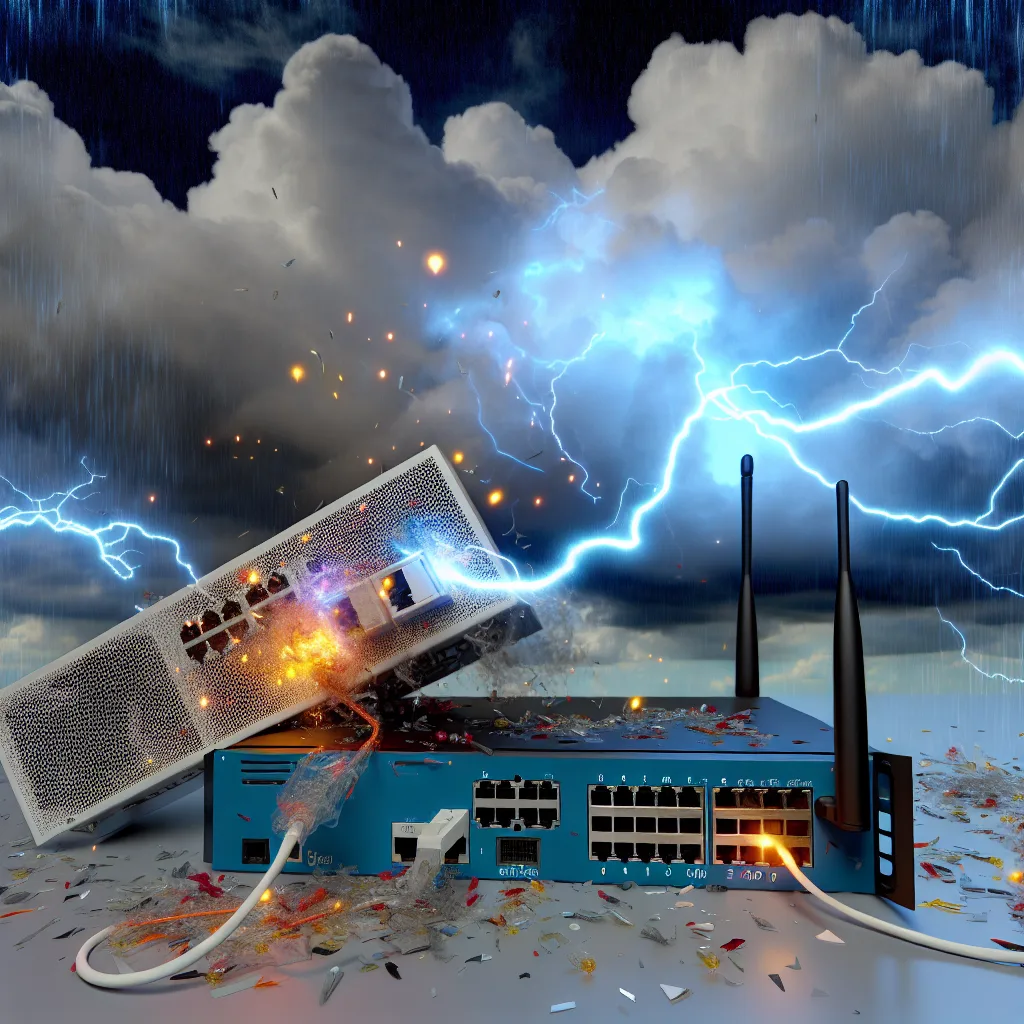Learn what to do if your Power Over Ethernet devices go silent after a storm
Lightning storms can be beautiful but also terribly destructive, especially when your home network gear gets caught in the crossfire. Recently, my house was struck by lightning, and it seemed to have fried my WAP (Wireless Access Point) and switch. If you’re dealing with a similar chaos of silent devices, here’s a straightforward take on what I went through and some tips on what you can do.
What Happened to My Fried WAP and Switch?
My WAP is powered by PoE (Power Over Ethernet), meaning it got its electricity right through the network cable connected to the switch. After the strike, my WAP wouldn’t power on at all. I tried swapping cables and ports on the switch without any luck. Plugging the WAP directly into the router also didn’t help—it just wouldn’t power on.
On top of that, the switch itself showed no signs of life. No lights at the RJ45 ports, even after switching power cables and outlets. I carefully inspected all the cables for damage or burn marks, but visually everything looked fine. Despite this, it was clear something fried inside.
Signs That Your WAP and Switch Might Be Fried
- No power lights on the switch or WAP.
- Tried multiple cables and ports with no success.
- No visible damage on cables, but devices still don’t work.
This usually means the internal circuits of your WAP and switch got damaged from the lightning’s power surge. PoE devices can be particularly vulnerable since power comes through the network cable.
What to Do Next?
- Don’t just assume cables are fine – Even if cables don’t show damage, they could still be compromised. Try using known-good cables.
- Test devices individually – Try powering your switch and WAP from different power sources and ports.
-
Consider surge protectors or UPS – To prevent future damage, use surge protectors or uninterruptible power supplies, especially for sensitive networking gear.
-
Consult the manufacturer — Check the official support pages for your specific WAP and switch. Some manufacturers detail how to run diagnostics or repair options. For example, Cisco’s support site or Ubiquiti’s help center can offer precise guidance.
-
Know when to replace — Sadly, internal damage from lightning often means it’s time to replace your devices. Attempting to fix them without the right skills can be risky.
Lightning and Network Devices: What You Should Know
Lightning causes massive voltage surges that can fry electronics instantly. Network gear, especially PoE devices, are susceptible because power and data share a line. Without proper protection, damage can be extensive.
For more on lightning protection, the National Weather Service offers excellent safety tips and technical info about surge protection.
Wrapping It Up
Dealing with a fried WAP and switch after a lightning strike is frustrating but, unfortunately, not uncommon. Test everything carefully, use good cables, and don’t hesitate to reach out to manufacturer support. And to save yourself from heartbreak in the future, invest in proper surge protection for your home network.
If you want to dig deeper into PoE and network device troubleshooting, this guide from Network World has some great insights.
Remember, technology can fail, but a little preparedness and know-how can save you time and stress. Stay safe and keep those devices protected!
